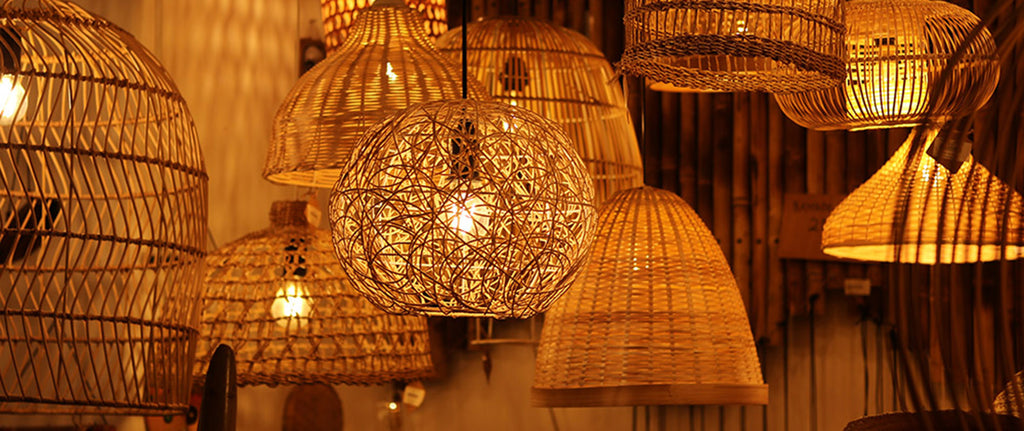How design impacts the livelihoods of Rural Artisans

For millennials and earlier generations, exhibitions during their childhood were a place to see and experience products, merchandise, etc., from different parts of India. The stalls at the exhibitions that intrigued the most and crowded were the non-mundane stalls with novelty and uniqueness. The fine and handwoven crafts and merchandise from villages were a rarity in the cities which the exhibitions would take advantage of. These crafts while not utilitarian found a home pretty easily those times. Fast-forward to the current times, globalisation, umpteen exhibitions, and online marketplaces have provided easy access to these crafts, and bodes well to keep the crafts alive in India.

But wait!, that is not the whole story, these new marketplaces have created a unique scenario - the crafts that were considered unique once upon a time are losing its charm slowly and steadily. I am sure, at exhibitions you would have overheard people saying “I have seen these and have one at home, let’s move on to the next stall”. There are many reasons why the craft stalls at exhibitions churn out the same things again and again, I will just list the major reasons here,
1.The disconnect – Artisans know how to make things, but rarely know what to make. The raw material and skill is in the villages, but the market is in the cities, you see the disconnect?
2.The Conundrum – Let me put this brutally out there – most artisans lack design knowledge and most designers aren’t willing to understand the artisan’s skill and raw material. A designer-artisan association will fail if the designers are over aggressive in their designs, or come with timeline - I WANT THIS THING TOMORROW.
3.Next meal – Most artisans minds are consumed by where their next meal is coming from. When you are thinking about the next meal for your family, you rarely have the inclination to be innovative.
4.The great Indian migration – Industrialisation has opened so many avenues for rural India, most of the younger generations want to move to the cities. Can’t blame them, can we? Everyone wants to be financially stable, seeing their parents struggle to sell their goods, the younger population are looking for greener pastures.
5.Comfort - Artisans find it comfortable doing the same thing again and again.
6.CSR initiatives – Ill managed CSR funds spread a false sense of hope. When funds dry up, and the initiative is abandoned before a craft is self-sustainable, and the artisans are back to square one.

Now that is ranted out, what is the solution? The answer is DESIGN to MARKET... Through design we need to reinterpret the craft, reorient the craft to the modern context by ensuring that each design has functional and aesthetic value. We need to transform traditional crafts to products that can be showcased on par with the contemporary-created products of today in lifestyle stores and not be limited to the craft-fairs alone.
Well thought out designs can make a craft very popular and bring it back to life, for example revival of bamboo/rattan weaving patterns. Back in the days, bamboo mats were extremely popular, these mats would come in many forms – simple to extremely complicated weaving patterns. Some of these patterns can be seen on wooden chairs and sofas of the past. Artisans find it easy to make mats and when incorporated in multiple daily life needs of the modern world, we create a win-win situation. Since 2019, Bamboopecker has been reviving these patterns by incorporating them into furniture, décor, lighting, etc. Below are some of the examples of how Bamboopecker has transformed weave patterns into products of high utilitarian value, quality and aesthetics that are current.

Take it one step further, strong branding will be make a craft sustainable and Bamboopecker is all about that! Our Indian craft sector need more organizations like Kadam Haat and Bamboopecker, the ones that make crafts easily accessible to designers and architects and bridge the gap between them. Organizations that work at the grass roots level tend to better understand the skillets, the effort that goes behind a craft, quality of raw material, and the cultural intricacies. Collaborations between designers and artisan collectives will bring various crafts to the fore through custom designs and create unique spaces. Currently, Bamboopecker and Maia design studio are collaborating to design and build a very large homogeneous lampshade spanning 12 feet in diameter. This will be a statement piece, that will bring skills and crafts of bamboo and cane artisans to the fore and will arguably be the largest lampshade in Bangalore, India, if not in entire India.
I feel the biggest contribution in reviving the crafts of India and in turn the livelihoods of rural India should come from Gen Z and Gen Alpha. Educational institutions of design and architecture should incorporate local crafts of India into their curriculum. These institutions should encourage design students to take up projects in rural India. Indian crafts need support from every quarter and more importantly from the young minds of India.
